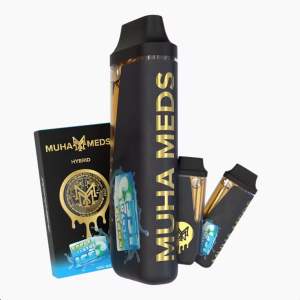Testosterone Replacement Therapy (TRT) helps men with low testosterone feel more energetic and balanced. TRT works by using testosterone esters, which raise and maintain healthy testosterone levels in the body.
You’ll find different types of testosterone esters—enanthate, cypionate, undecanoate—and each one works a bit differently when it comes to how often you need it and how your body absorbs it. Your doctor will usually help you decide which one fits your needs best.
In the US, TRT from a pharmacy typically costs anywhere from $30 to $100 a month. In the UK, prices can vary based on the supplier.
Quality and convenience really matter to most people, let’s be honest. For UK readers, Evolution-lab.UK – Steroids UK Shop sells lab-tested products with discreet next-day delivery and secure card payments. If you’re in the US, Steroiduck.com is a trusted USA Steroids Online Store with fast domestic shipping and lots of positive online reviews for steroids and supplements.
Wondering which ester balances effects and convenience best? Medical research says absorption rates and dosing schedules vary by ester, and TRT in clinical practice offers insights for patients and doctors.
Understanding Testosterone Replacement Therapy (TRT)
Testosterone Replacement Therapy (TRT) helps men with low testosterone manage symptoms and feel better day-to-day. By giving our bodies extra testosterone, TRT can ease problems like low energy, less muscle, and mood swings.
What Is Testosterone Replacement Therapy?
TRT is a treatment that boosts testosterone for men who can’t make enough of it on their own. Testosterone matters for muscle, bones, mood, and of course, sexual health.
If you have male hypogonadism—meaning your body makes too little testosterone—you might need TRT. Treatment options include injections, gels, patches, or tablets.
Doctors reserve TRT for men with confirmed low testosterone and symptoms. It’s not for everyone, especially if your levels are already normal.
How TRT Works
TRT brings your testosterone up to healthy levels. Doctors might use injections, patches, or gels to do this.
Injectable esters release testosterone slowly over days or weeks. Gels and patches give a steady dose through your skin. This helps avoid those annoying hormone swings.
You’ll need regular blood tests to keep things safe and effective. Side effects can happen, so your healthcare provider should always oversee TRT.
Who Needs TRT?
You might need TRT if you have symptoms like fatigue, low sex drive, muscle loss, or mood changes—and your tests show low testosterone.
Men with hypogonadism—when the testicles don’t produce enough testosterone—are the main group for this therapy. Age, injury, or diseases can cause it.
Not every guy with low energy actually needs TRT. Doctors weigh your symptoms and test results before making a call. They’ll look at your medical history and current health, too.
Causes and Symptoms of Low Testosterone
Low testosterone, or low T, can mess with your physical health, mood, and sex life. Knowing what causes it and how to spot the symptoms can help you decide when to get checked.
Common Causes of Low T
Testosterone drops naturally as we get older, but some guys notice a bigger dip, earlier. This might be from primary hypogonadism (issues with the testicles) or secondary hypogonadism (problems with the brain’s pituitary or hypothalamus).
Other things that can lower T:
- Obesity
- Diabetes
- Chronic illness
- Certain meds (like steroids or opioids)
- Testicular injury or infection
- Chemo or radiation
Sleep apnea, heavy drinking, or sometimes unknown reasons (“idiopathic” low T) can also play a role. Figuring out the cause helps you and your doctor plan what to do next.
Recognizing Symptoms of Low Testosterone
Symptoms usually creep up gradually. You might notice your sex drive drops, or erections become harder to get or keep, leading to sexual dysfunction.
A lot of guys feel tired all the time, less motivated, maybe even a little down.
Physical signs can look like:
- Less muscle
- More body fat
- Weakness
- Bones that don’t feel as strong
Some guys struggle with memory, focus, or sleep. Not everyone has the same symptoms, and they can overlap with other problems. If you’re dragging, your mood’s off, or your libido tanks, it might be time for a lab test.
TRT Treatment Options and Preparations
Starting TRT means picking from a few different types of testosterone. Each has its perks and downsides, and your body absorbs them in its own way.
Testosterone Injections and Injectable Forms
Testosterone injections are probably the most common. You’ll see options like cypionate, enanthate, and undecanoate. These go into the muscle, and how often you need them depends on the type—some every week, others (like undecanoate) every 10 to 14 weeks.
Cypionate and enanthate are usually cheaper and easy to find. They keep your levels steady but need more frequent shots. Undecanoate lasts longer, but it’s pricier and sometimes hard to get. Injections can cause your testosterone to rise and fall between doses, so you and your doctor should work together to find what fits.
Topical Preparations: Gels, Creams, and Patches
If you hate needles, topical testosterone—like gels, creams, and patches—might be your thing. You apply these to your skin every day, and they go straight into your bloodstream. Gels are popular because they’re steady and simple.
But there’s a catch: gels and creams can rub off on others if you’re not careful. Patches sometimes irritate the skin but are convenient for many. These are good if you want to avoid injections and don’t mind a daily routine.
Topicals work best if you follow the instructions closely. Miss a dose or apply it wrong, and your results could suffer.
Implants and Pellets
Implants and pellets are for people who don’t want regular shots or daily gels. A doctor places small pellets under your skin, and they release testosterone slowly for three to six months.
You won’t have to remember doses as often, which is nice. Risks include infection at the site or the pellet coming out early.
They’re less common than injections or gels, but they’re a solid choice if you want fewer doctor visits or less hassle.
Oral and Alternative Testosterone Therapies
Oral testosterone exists, but it’s not as popular. Older versions could hurt your liver, but newer ones, like testosterone undecanoate capsules, are safer for some folks.
You usually take these once or twice a day, and your body absorbs them through the lymphatic system, which keeps your liver safer. There are other options, like buccal systems (you stick them to your gum), but they’re not used much—mainly because they’re uncomfortable.
Oral and alternative versions might be more convenient but can cost more, work less well, or have more side effects compared to shots or gels. It’s worth talking through all this with your provider before choosing.
Selecting the Best Testosterone Ester for TRT
You’ve got options when it comes to testosterone esters, and each one has its own strengths and weaknesses. Which ester you pick affects how often you need shots, how much you pay, and how well the treatment works for you.
Overview of Testosterone Esters
Testosterone esters are basically testosterone molecules with an ester attached, which changes how your body absorbs and holds onto the hormone.
The most common esters for TRT are cypionate, enanthate, and undecanoate. Each one is designed to keep testosterone levels steady after each shot.
Shorter-acting esters like cypionate and enanthate need more frequent injections, while undecanoate lasts longer between doses. The right choice can make therapy easier and more effective.
Comparison of Popular Esters: Cypionate, Enanthate, Undecanoate
Testosterone cypionate is super common in the US. You usually get it every 1-2 weeks, and it’s good for keeping levels stable.
Testosterone enanthate is similar, used worldwide, and also given every 1-2 weeks.
Testosterone undecanoate lasts a lot longer—sometimes only needed every 10-14 weeks. That’s convenient, but it usually costs more and isn’t as easy to find.
Here’s a quick look:
| Ester | Injection Interval | Cost | Availability |
| Cypionate | 1-2 weeks | Moderate | High (US) |
| Enanthate | 1-2 weeks | Moderate | High (global) |
| Undecanoate | 10-14 weeks | Higher | Limited in some areas |
If you don’t mind more frequent shots, you might get more stable hormone levels. But it could mean more clinic trips or learning to inject at home.
Pharmacokinetics and Dosing Considerations
Pharmacokinetics is just a fancy way to talk about how your body handles the drug. Cypionate and enanthate peak about 24-48 hours after injection and then drop, which sometimes leads to mood or energy swings.
Undecanoate gives a longer, more even release, so you get fewer hormone spikes. Fewer injections sounds great, but if the dose isn’t right, side effects can creep in.
What works best depends on your body, how you feel, and what you prefer. Your doctor should keep an eye on your levels and adjust as needed. For more on this, check out this overview on testosterone therapy.
Benefits and Risks of Testosterone Replacement Therapy
TRT can really help some guys feel and function better, but it’s not without risks. Knowing the ups and downs helps you and your doctor make smart choices.
Potential Benefits of TRT
People often try TRT to fix low energy, bad moods, or trouble in the bedroom. Many report more energy, better sex, and a confidence boost. Some feel their mood lifts and life just feels a bit brighter.
TRT can help keep bones strong, lowering the risk of fractures as you age. You might notice more strength and muscle, making daily stuff easier and fighting age-related muscle loss.
A lot of men see their quality of life improve. They feel more alert, active, and motivated. Results vary though—nobody can promise you’ll feel like a teenager again.
Possible Side Effects and Risks
TRT isn’t risk-free. One big worry is the prostate—testosterone might encourage prostate cancer growth, so your doctor will likely check for problems before and during treatment.
Other risks include mood swings, acne, and more red blood cells, which could mean a higher chance of blood clots. TRT can also lower fertility by cutting sperm production. Some men get swollen ankles or tender breasts.
Older men or those with health issues have a higher risk of these side effects. Some meds or medical problems can make things worse, so it’s important to talk everything through with your doctor.
Managing and Monitoring Treatment
When starting or continuing TRT, we’ve got to work closely with our doctors. Frequent blood tests help us keep an eye on side effects, hormone levels, and blood cell counts.
Regular follow-ups give us a chance to catch changes early. Our healthcare providers should always check prostate health and ask about symptoms.
If we notice anything unusual—mood swings, infections, or just something that feels off—we need to speak up right away. Some guys might need to tweak their dose if side effects pop up or the treatment isn’t working well.
Cost and Accessibility of TRT
Testosterone replacement therapy (TRT) isn’t a one-and-done deal. It means ongoing meds and regular check-ins with a doctor.
Costs swing a lot depending on where you live, which medication you use, and what your insurance covers.
Average Monthly Pharmacy Costs in the United States
In the U.S., the average monthly cost for TRT usually falls somewhere between $30 and $500. Most folks end up paying about $80 to $150 each month for standard injectable testosterone like cypionate or enanthate.
Testosterone gels, patches, and pellets? Those can run higher—sometimes $250 to $500 a month. These numbers usually reflect what you’d pay out-of-pocket if you don’t use insurance.
If you do have insurance, your copay or coinsurance will change the final bill.
Table of Average Monthly TRT Costs (U.S.):
| Form | Estimated Cost (per month) |
| Injection | $30–$150 |
| Gel | $120–$500 |
| Patch | $200–$400 |
| Pellet | $350–$500 |
Factors Affecting TRT Costs
Lots of things can push TRT costs up or down. The type of testosterone, whether you go for a brand or generic, and your dose all matter.
Insurance plays a big role here. Some plans help cover TRT, but others might deny claims or want extra paperwork before approving it.
Pharmacy prices, where you live, and whether you can get generics also change what you’ll pay. On top of that, there are extra costs—lab tests, follow-up visits, and supplies like syringes or alcohol swabs. If insurance doesn’t cover these, they can really add up.




